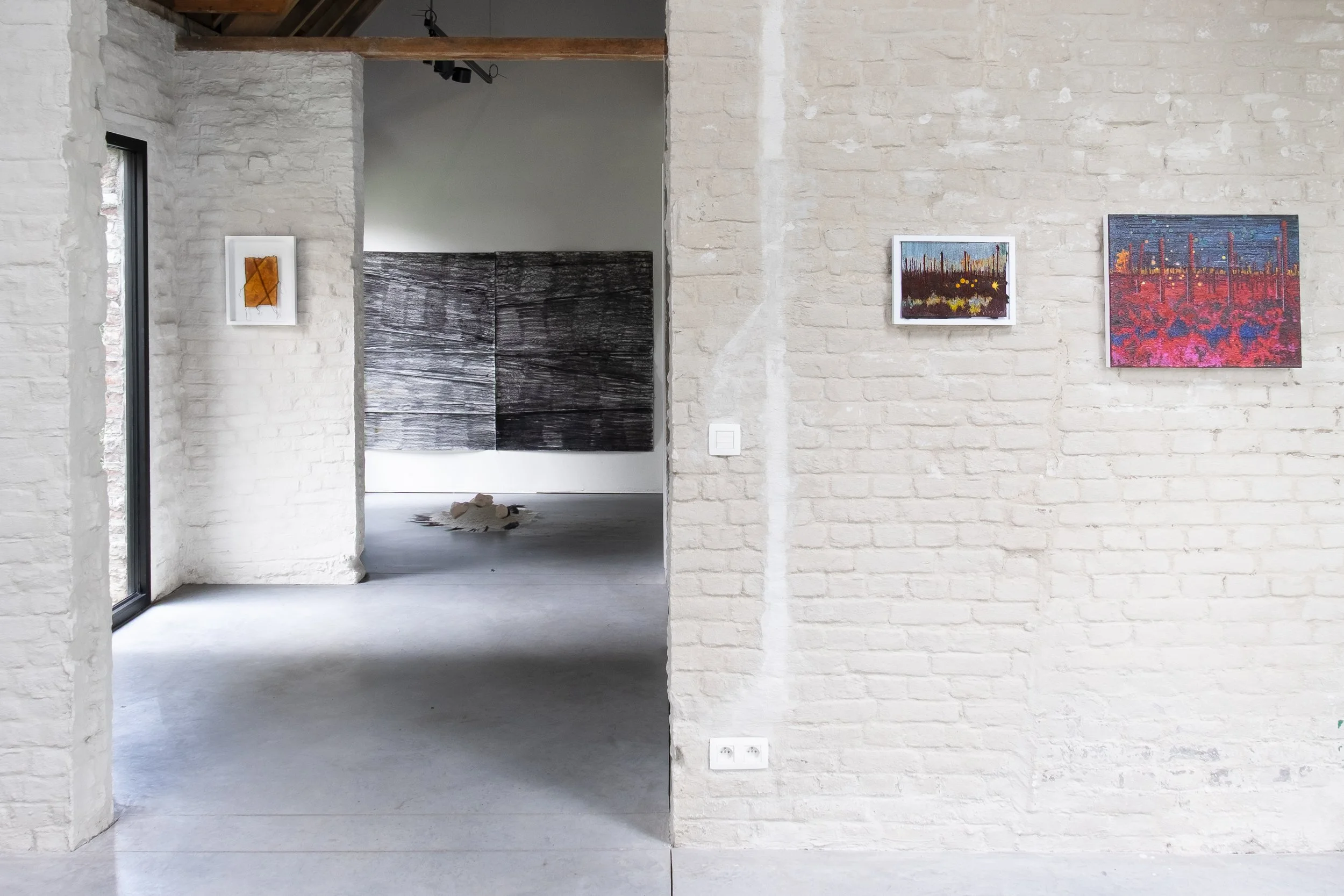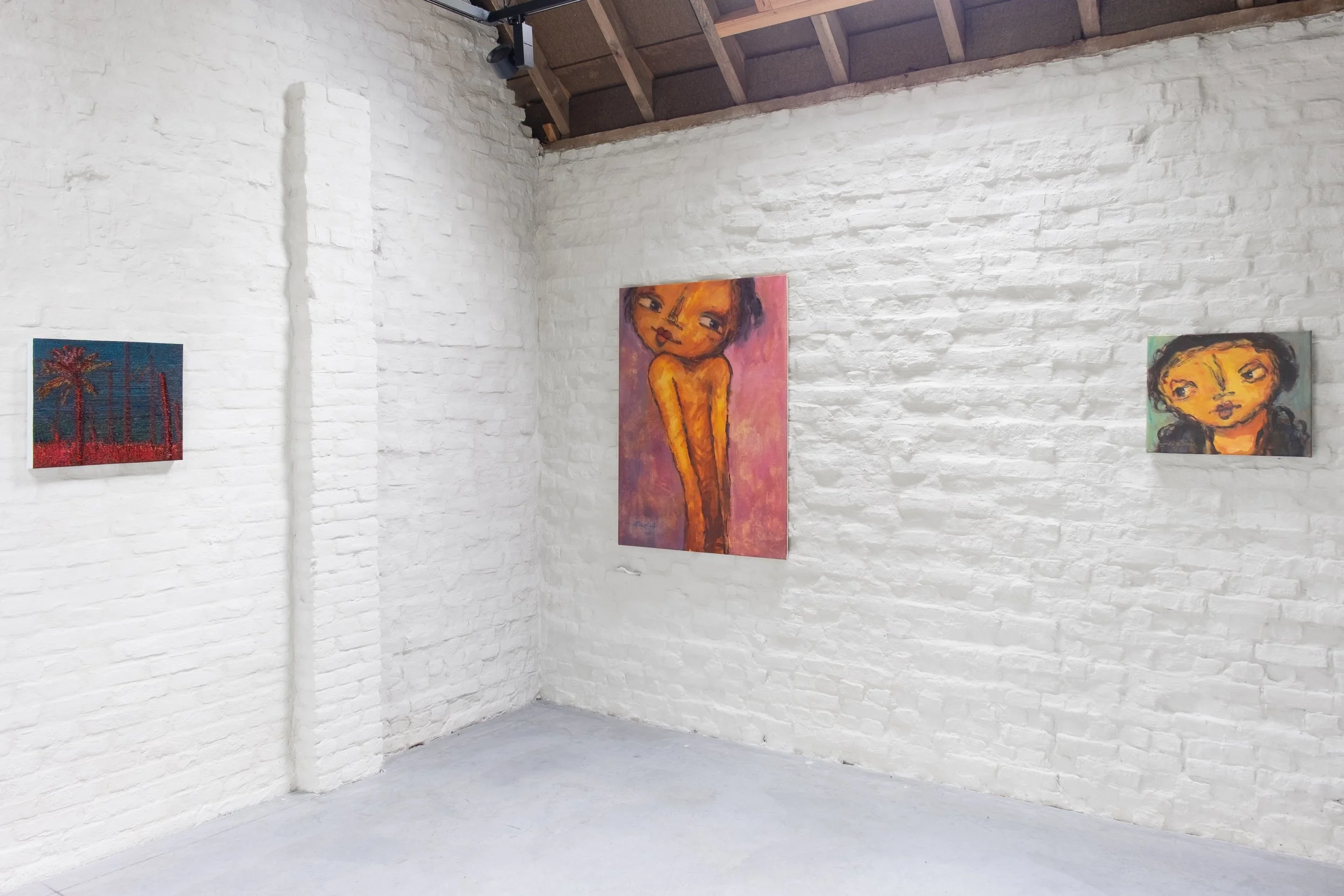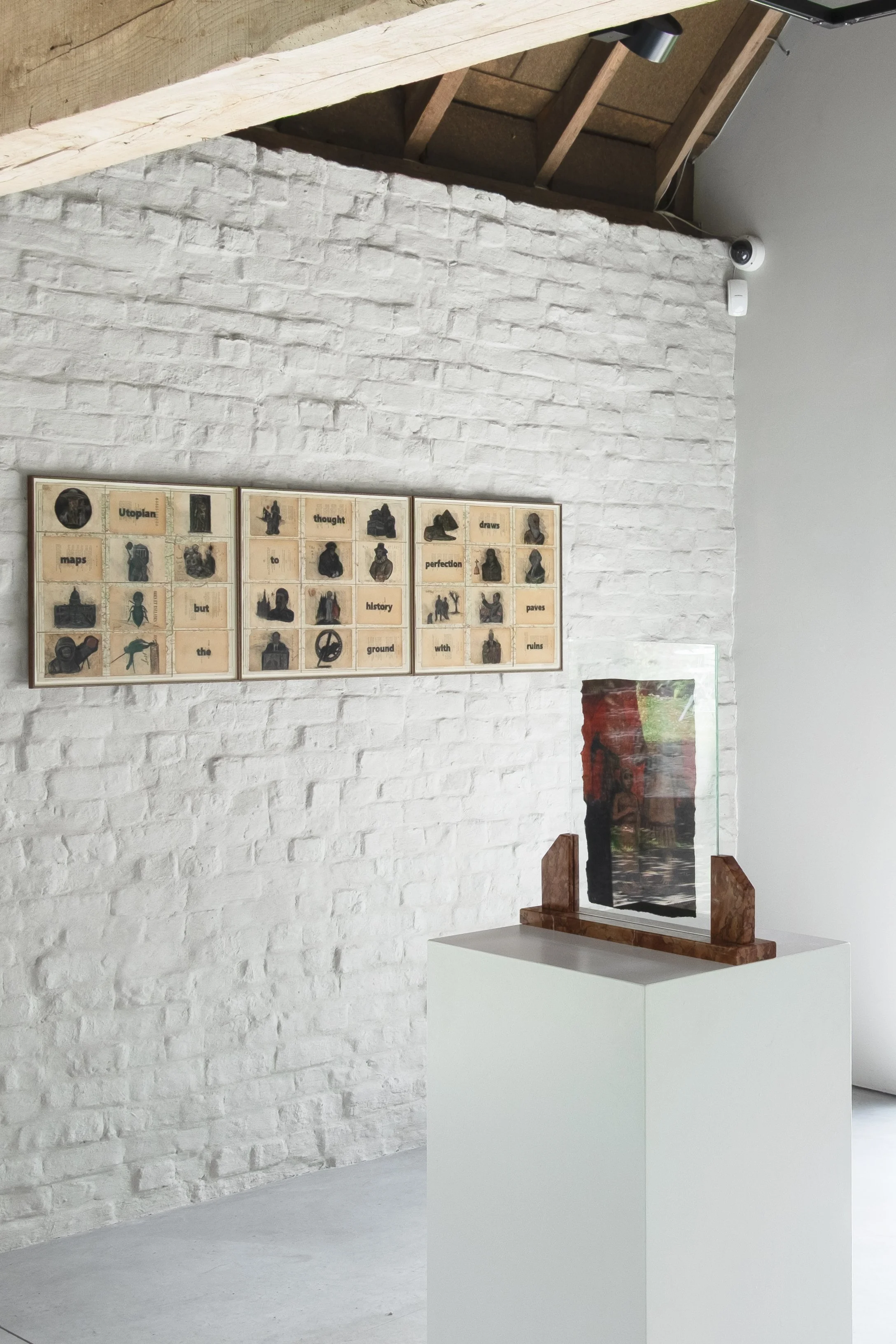The World Ahead —
Visions from the Global South
Another Language from the Middle East
Raouf Al-Ajouri, Bilal Bahir, Samira Hodaei, Amir Khojasteh and Charbel abou Zeidan
19 July — 21 September, 2025
Pavilion 2
Press release
(EN) In this space, five voices from the contemporary Middle East resonate—each with a radically personal form of remembrance, interiorization and resistance. Artists Amir Khojasteh, Samira Hodaei, Raouf Al-Ajouri, Charbel abou Zeidan, and Bilal Bahir do not present direct testimonies of conflict but translations of it: through the body, writing, collage, and silence.
Their works speak about preserving identity amid displacement, traces of violence without showing the violence itself, and the complexity of memory and hope. Rather than clear-cut statements, they present layered symbols that allow room for reflection—both for those connected to the region and those observing from afar.
Raouf Al-Ajouri (°1977, Gaza) paints figures with intense simplicity. Often children who silently carry the world with wide eyes. His work is poetic and raw at once.
Bilal Bahir (°1988, Iraq/Belgium) works with collage and text. His images stem from figures in philosophy and politics that began as utopias but turned into power. His work investigates where ideals falter.
Samira Hodaei (°1981, Iran) explores in her work the deep cultural and emotional connection between the people of southern Iran and the date palm, which has been severely damaged by war and ecological disasters in the Arvand Kenar region. The decapitated palms in her work become powerful symbols of loss, resistance, and the fragile interweaving of human and natural histories..
Amir Khojasteh (°1988, Iran/Belgium) depicts in his work a figure in a posture that refers to an ancient language of power and masculinity. He explores how this traditional expression of authority can be released and reshaped, resulting in a new image that no longer commands but invites.
Charbel abou Zeidan (°1978, Lebanon/Belgium)—an architect by training and former designer at Elie Saab—creates textile works blending graphic lines, architectural fragments, and Arabic calligraphy. Through this visual language, he explores hopeful aspects of migration, abstracting calligraphy into universal forms that connect cultures and experiences.
(NL) In deze ruimte resoneren vijf stemmen uit het hedendaagse Midden-Oosten — elk met een radicaal eigen vorm van herinnering, verinnerlijking en verzet. De kunstenaars Amir Khojasteh, Samira Hodaei, Raouf Al-Ajouri, Charbel abou Zeidan en Bilal Bahir brengen geen directe getuigenissen van conflict, maar vertalingen ervan: via het lichaam, het schrift, collage en de stilte.
Hun werken spreken over het behoud van identiteit in contexten van ontheemding, over de sporen van geweld zonder het geweld zelf te tonen en over de complexiteit van herinnering en hoop. In plaats van eenduidige statements presenteren ze gelaagde symbolen die ruimte laten voor reflectie — zowel voor wie verbonden is met de regio als voor wie vanop afstand kijkt.
Raouf Alajouri (°1977, Gaza) schildert figuren met intense eenvoud. Vaak kinderen, die met grote ogen zwijgend de wereld dragen. Zijn werk is poëtisch en rauw tegelijk.
Bilal Bahir (°1988, Irak/België) werkt met collage en tekst. Zijn beelden vertrekken vanuit figuren uit de filosofie en politiek die begonnen als utopie, maar uitmondden in macht. Zijn werk onderzoekt waar idealen kantelen.
Samira Hodaei (°1981, Iran) onderzoekt in haar werk de diepe culturele en emotionele band tussen de mensen van Zuid-Iran en de dadelpalm, die door oorlog en ecologische rampen, in de regio Arvand Kenar, zwaar is beschadigd. De onthoofde palmen worden in haar werk krachtige symbolen van verlies, weerstand en de kwetsbare verwevenheid van menselijke en natuurlijke geschiedenissen..
Amir Khojasteh (°1988, Iran/België) beeldt in zijn werk een figuur af in een houding die verwijst naar een eeuwenoude taal van macht en mannelijkheid. Hij onderzoekt hoe deze traditionele uitdrukking van gezag losgelaten en opnieuw vormgegeven kan worden, waardoor een nieuw beeld ontstaat dat niet langer beveelt, maar uitnodigt.
Charbel abou Zeidan (°1978, Libanon/België) – architect van opleiding en voormalig ontwerper bij Elie Saab — creëert textielwerken waarin grafische lijnen, architecturale fragmenten en Arabische kalligrafie samensmelten. Met deze visuele taal verkent hij de hoopvolle kanten van migratie, waarbij hij de kalligrafie abstraheert tot universele vormen die culturen en ervaringen met elkaar verbinden.







